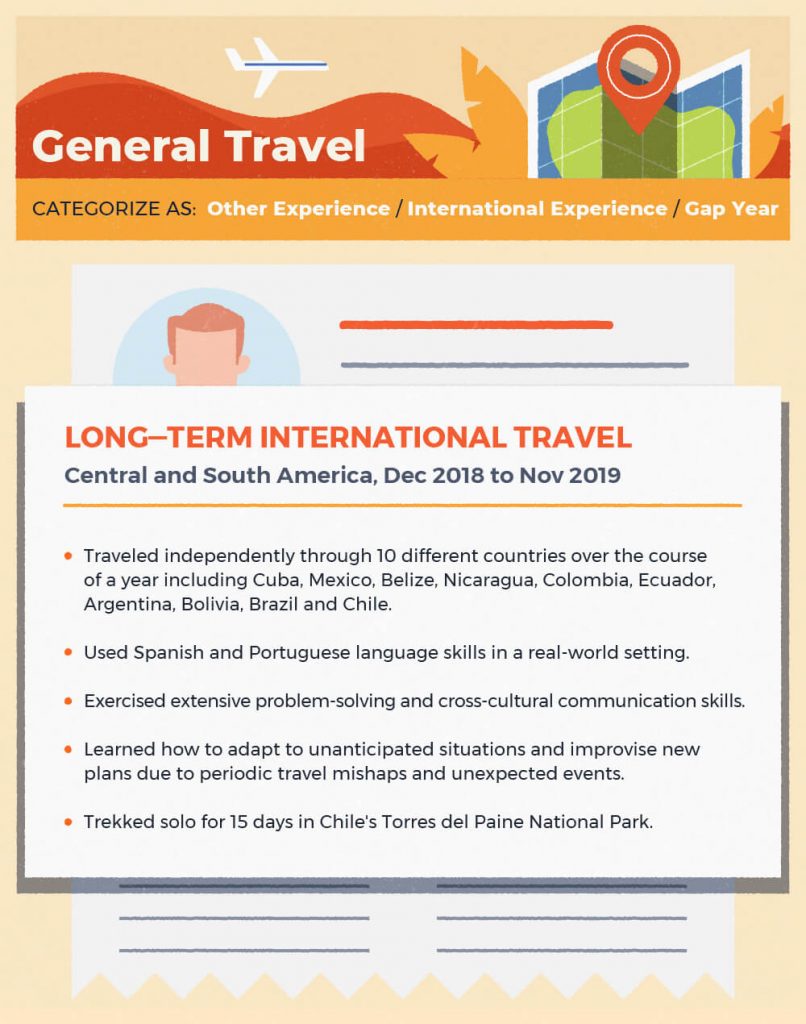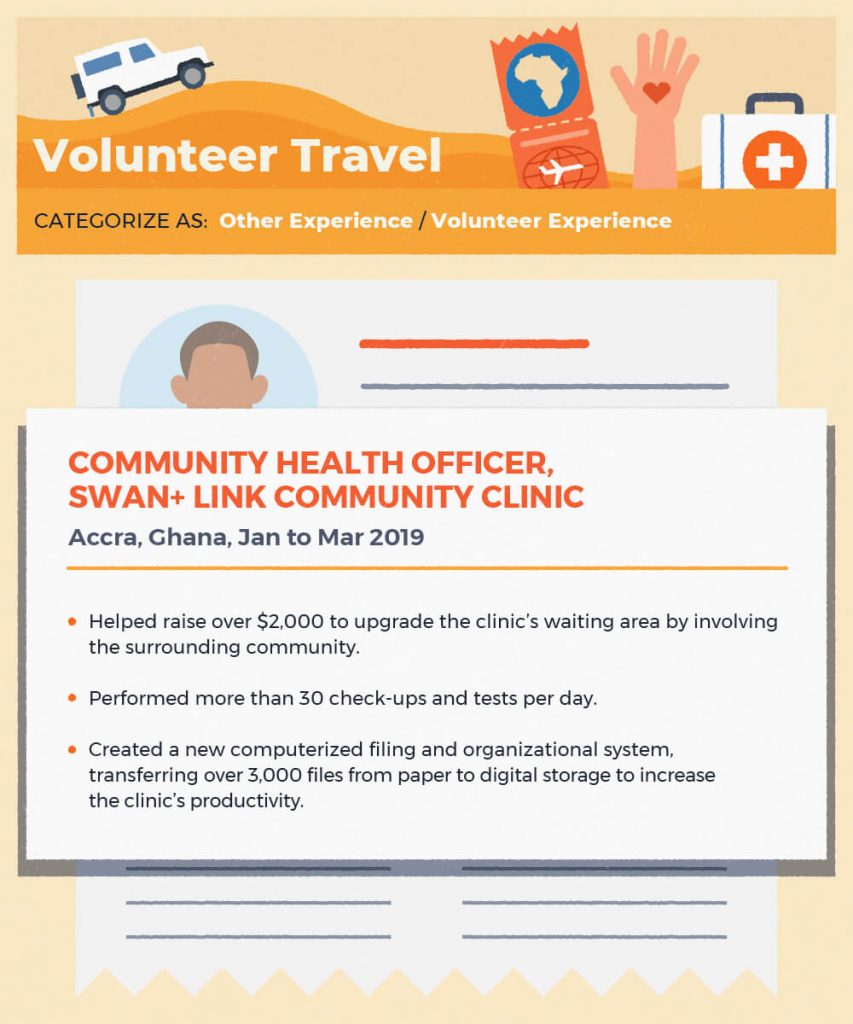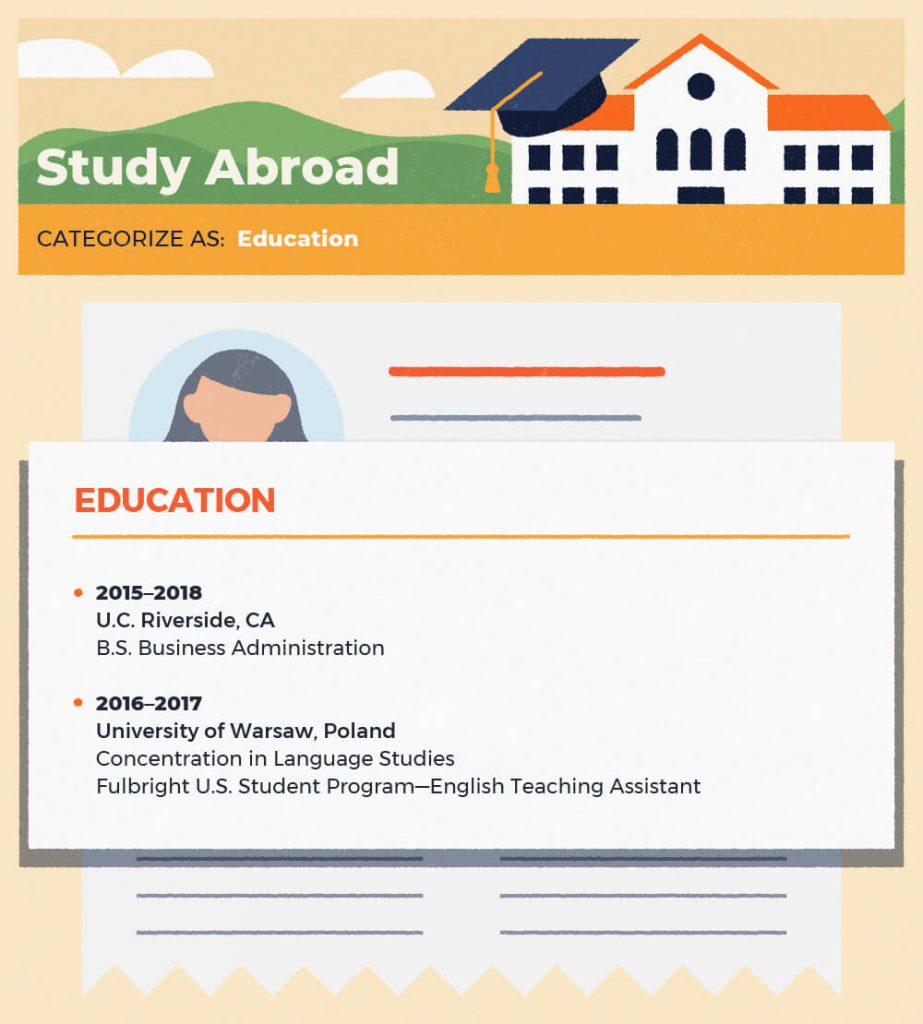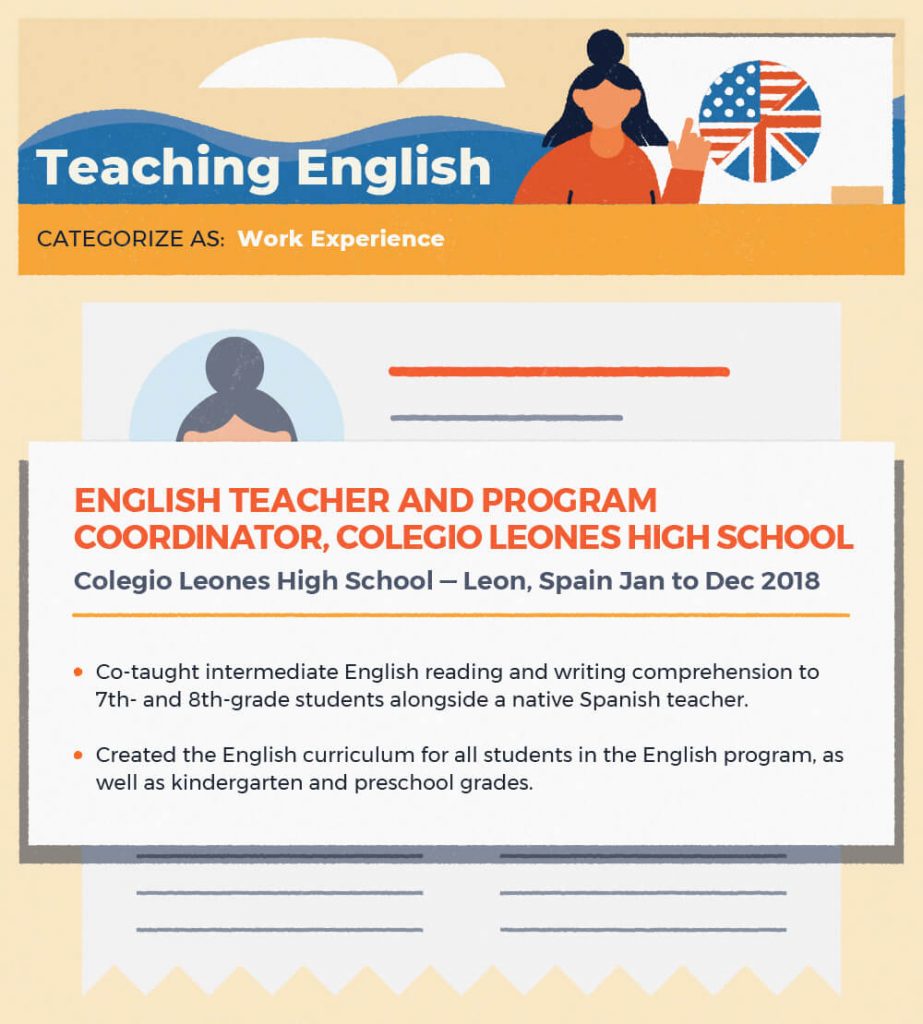Wondering how to explain a gap year on your resume? No matter what the nature of your travel was, you can list it strategically to emphasize the transferable skills you learned. Read on to find out how.
By: Ashley Leal | Resume Writer for Let’s Eat, Grandma
So you took a break from the workforce to travel and are looking to jump back in after this time away. You probably had a great experience, but now there’s one thing you’re worried about: you now have a “gap” in your resume.
How do you still market yourself with a year or more essentially missing from your resume because there isn’t a formal job to list?
(Real quick: This blog primarily covers gap years related to travel or volunteering — if you need help explaining a gap after being laid off, being a stay-at-home parent, caring for a loved one, or another life disruption, check out this blog or this podcast!)
First, I think it’s important to note here that it is okay to have a gap year on your resume. Maybe you finally got to cross a bucket list item off and were able to spend a year traveling and exploring new countries. Or maybe you had a life-changing experience on a mission trip or service excursion. Those are very good things.
Whatever the case may be, it is important that you dive deep into these experiences and pull out some transferable skills that are marketable for the job you are applying for. I’m going to discuss a few common examples of gap years on a resume and detail how you may be able to list these experiences tactically on your resume.
Ways to List a Gap Year on Your Resume
1) General Travel

After years of dreaming and planning, the time finally came; you had the chance to visit new countries, try interesting foods, and sight-see some of the best places the world has to offer. Most likely this was done leisurely and you are now wondering how you can place this on your resume in a strategic way.
Well luckily for you, while you were busy traveling the world, you were actually gaining exceptional communication skills by learning how to communicate with people with a different culture or language.
Another useful skill you likely perfected is budgeting. When you set off for your world adventure, did you have a set budget and need to be strategic with delegating your funds to ensure you had shelter, food, and the occasional knick-knack? This demonstrates that you are responsible with your finances and can plan ahead.
By showcasing these practical skills in a way that shows business value (versus just stating that you took a year to travel the world), this experience will speak volumes on your resume.
2) Volunteer Travel
This travel differs from the previous scenario in that it’s more mission-driven. You were most likely able to use a variety of skills, so be sure to add some metrics and accomplishments that really stand out.

Did you have to fundraise prior to and during your mission trip? How did you acquire donations? If you reached out for sponsors, this shows your ability to foster relationships with vendors and individuals to achieve organizational goals.
In addition, feel free to talk about what tasks you performed on your trip.
Did you teach a class of students every week? If so, how many were in the class and what kind of materials and resources did you have to develop to streamline their learning processes?
Did you assist in rebuilding a community that was recently devastated by a Hurricane? What was the day-to-day like? Did you work with any teams in building the house, and how did you communicate and coordinate with each other to get the job done?
Once again, these transferable skills can be directly pulled out of your experience and applied to any position you are applying for.
3) Study Abroad, Immersion Programs, or Teaching English
More academic travel experiences are even easier to list on your resume.
If you took part in a foreign immersion experience during a break from school or after you graduated, you could list it in the education section of your resume. However, it should be listed as its own entry rather than part of your college experience.
Consider the nature of your program, though — was a significant part of your time spent teaching English? If you were mostly teaching, you’ll likely want to list it as a professional experience. Just like in #2 above, you’ll want to write out bullet points with the details of your accomplishments and the communication and leadership skills you used.
These are just a few examples of how you can list a gap year on your resume.
No matter what your situation may be, just remember to really focus on what you did during this time and try to pull out as many accomplishments and transferable skills as you can.
Nevertheless, it is important to note that we don’t want to spend half of a page of your resume going into meticulous detail about your gap year. Instead, condense the information into a few lines or 1-3 bullet points so that it is not the focal point of your resume (but still has some meat on it.) And, as always, prioritize only what is relevant to the job you’re applying for.
Finally, don’t forget about your cover letter, either! Your cover letter is meant to complement your resume, and explaining what you learned on your gap year is a great use of it.
For additional guidance on how to address a gap year on your resume, feel free to check out this Career Warrior Podcast Episode #104 for more information.
And if you need more help with your job search documents, schedule a free call with us to find out how our professional writers can rework your resume, cover letter, and LinkedIn profile to land you that dream job.
Happy job hunting!
Love,
Grandma



